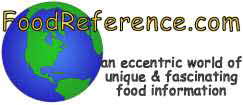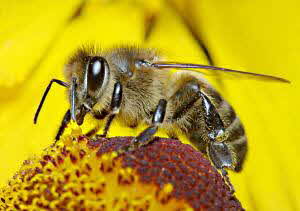You are here > Home > Food Articles >
Attracting Bees and Butterflies To Your Garden
|
|
Dear EarthTalk: I’d like to have a garden that encourages bees and butterflies. What’s the best approach?
Robert Miller, Bakersfield, Calif.
Attracting bees and butterflies to a garden is a noble pursuit indeed, given that we all depend on these species and others (beetles, wasps, flies, hummingbirds, etc.) to pollinate the plants that provide us with so much of our food, shelter and other necessities of life. In fact, increased awareness of the essential role pollinators play in ecosystem maintenance—along with news about rapid declines in bee populations—have led to a proliferation of backyard “pollinator gardens” across the U.S. and beyond.
“Pollinators require two essential components in their habitat: somewhere to nest and flowers from which to gather nectar and pollen,” reports the Xerces Society, a Massachusetts-based non-profit that protects wildlife through the conservation of invertebrates and their habitat. “Native plants are undoubtedly the best source of food for pollinators, because plants and their pollinators have coevolved.” But, Xerces adds, many varieties of garden plants can also attract pollinators. Plant lists customized for different regions of the U.S. can be found on the group’s website.
|
Any garden, whether a window box on a balcony or a multi-acre backyard, can be made friendlier to pollinators. Xerces recommends providing a range of native flowering plants that bloom throughout the growing season to provide food and nesting for bees, butterflies and other pollinators. Xerces also says that clustering flowering plants together in patches is preferable to spacing individual plants apart. “Creating foraging habitat not only helps the bees, butterflies and flies that pollinate these plants, but also results in beautiful, appealing landscapes.”
Along these lines, gardeners should plant a variety of colors in a pollinator garden, as color is one of the plant kingdom’s chief clues that pollen or nectar is available. Master gardener Marie Iannotti, an About.com gardening guide, reports that blue, purple, violet, white and yellow flowers are particularly attractive to bees. She adds that different shapes also attract different types of pollinators, and that getting as much floral diversity of any kind going is a sure way to maximize pollination.
Another way to attract pollinators is to provide nest sites for bees—see how on the xerces.org website. The group also suggests cutting out pesticides, as these harsh chemicals reduce the available nectar and pollen sources in gardens while poisoning the very insects that make growing plants possible. Those looking to go whole hog into pollinator gardening might consider investing $30 in Xerces Society’s recently published book, Attracting Native Pollinators: Protecting North America’s Bees and Butterflies, which provides a good deal of detailed information about pollinators and the plants they love.
Gardeners who have already encouraged pollinators can join upwards of 1,000 others who have signed onto Xerces’ Pollinator Protection Pledge. And the icing on the cake is a “Pollinator Habitat” sign from Xerces stuck firmly in the ground between two flowering native plants so passersby can learn about the importance of pollinators and making them feel welcome.
CONTACTS: Xerces Society, www.xerces.org, About.com “Bee Plants,” gardening.about.com/od/attractingwildlife/a/Bee_Plants.htm
May 2013
EarthTalk® is written and edited by Roddy Scheer and Doug Moss and is a registered trademark of E - The Environmental Magazine (www.emagazine.com). Send questions to: earthtalk@emagazine.com . Subscribe: www.emagazine.com/subscribe
RELATED ARTICLES:
Please feel free to link to any pages of FoodReference.com from your website.
For permission to use any of this content please E-mail: james@foodreference.com
All contents are copyright © 1990 - 2014 James T. Ehler and www.FoodReference.com unless otherwise noted.
All rights reserved.
You may copy and use portions of this website for non-commercial, personal use only.
Any other use of these materials without prior written authorization is not very nice and violates the copyright.
Please take the time to request permission.
CULINARY SCHOOLS &
COOKING CLASSES
From Amateur & Basic Cooking Classes to Professional Chef Training & Degrees
More than 1,000 schools & classes listed for all 50 States, Online and Worldwide
FREE Food & Beverage Publications
An extensive selection of free magazines and other publications for qualified Food, Beverage & Hospitality professionals



